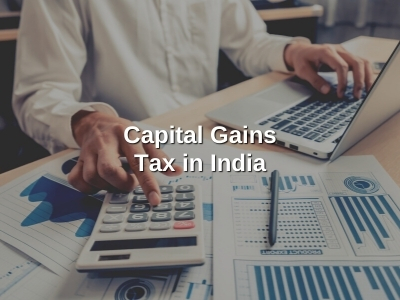A Guide to Understanding How This Tax System Works in India
 If you are residing or doing business in India and you own certain assets, those assets could be liable for capital gains tax. The amount of tax you would pay depends on the asset in question.
If you are residing or doing business in India and you own certain assets, those assets could be liable for capital gains tax. The amount of tax you would pay depends on the asset in question.
What Is Capital Gains Tax?
This type of tax is classified as a tax on any profit one may receive from the sale of a capital asset. If the profit falls under the income category, it is liable for the tax. The taxes are generally levied on short and long term gains. The taxes start from 10% and 15%.
In India, this type of tax cannot be applied to the property that is inherited because there is no sale involved. Assets that are received as gifts are specifically exempted under the Income Tax Act in the country. However, if you inherited the asset and you plan to sell it, then the capital gains tax will be applicable.
The tax that you pay will vary depending on how much profit you gain from the sale. To make the calculations easier, the Indian government has divided the capital gains tax into two categories, which are short and long term gains. This will be explained below.
What Is Classified as a Capital Asset?
In India, assets that could be classified as capital assets include the following:
- House
- Buildings
- Vehicles
- Trademarks
- Patents
- Leasehold rights
- Machinery
- Jewellery
- Land
Capital assets are divided into two categories in India. These are Short-Term Capital Asset (STCG) category and the Long-Term Capital Asset (LTCG) category.
- The STCG
- As an asset that is held for 36 months or less.
- For immovable properties like land, buildings, and houses, this has been reduced to 24 months.
- The formula for calculating the STCG is this: Full value of consideration – Expenditure that is incurred wholly and exclusively – Acquisition cost – Improvement cost = STCG
- The LTCG
- Assets that are held for more than 36 months.
- The 24 month reduction period is not applicable to moveable property (mutual funds, jewellery)
- The formula for calculating the LTCG is this: Full value of consideration – Expenditure that is incurred wholly and exclusively – Indexed acquisition cost – Indexed improvement cost = STCG
As part of your calculation, you will also need the following details to finalise the taxes you must pay:
- The sale price
- The purchase price
- The number of units
- The details of the purchase
- The details of the sale
- The details of any investments made
- Investment type
- The period between the purchase and the sale
- The type of capital gain involved
- The inflation cost index from the year of purchase
- The difference in price between the purchase and the sale
- The details of the LTCG with and without indexation
Simplify Your Taxation Process With 3E Accounting
Calculating the cost of your taxes can be time-consuming and sometimes complicated. That is why we are here to take the stress out of doing that. Our 3E Accounting taxation services will handle everything you need so you can focus on other things that matter.
For more information about our tax services and the range of other services we offer, contact the 3E Accounting team today.


